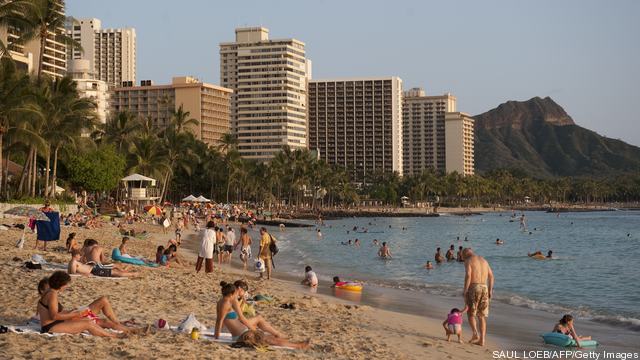
A plan to build a 100-mile undersea cable linking power grids on Hawaii’s islands would help meet the state’s ambitious renewable-energy goals, reduce its heavy dependence on imported oil, and cut electric bills for consumers.
It could also become an important test case for the ability of existing grids to rely on power from renewable sources. If it proves, as its backers hope, that grids can take more power from renewable sources than the maximum levels currently assumed by the industry, that would be a big boost to plans for offshore wind farms along the U.S. East Coast.
The Hawaiian project would be one of the largest of its kind, exceeding in mileage similar projects including the 53-mile Trans Bay Cable in the San Francisco area and the 50-mile Neptune line between New York and New Jersey, although being shorter than some other cables in Australia and Europe.
A plan to finance the cable’s construction and operation via the rate structure has been approved by Hawaii’s legislature. The state’s utility, HECO, is now seeking bids for construction with a view to having it operational by 2017.
Faced with electric prices that are three times higher than the national average, and the potential for significant renewables development, the Hawaiian government has set a high bar for renewables’ contribution to overall power supply.
Twenty-five percent of the state’s electricity must come from renewables by 2020, rising to 40 percent ten years later, according to its Renewable Portfolio Standard. The state that now depends on imported oil for more than three-quarters of its electricity also aims to derive 70 percent of its power from independent sources by 2030, according to government data.
Construction of the inter-island cable is designed to encourage development of renewable energy projects on individual islands, and to allow the sharing of power between the currently discrete grids.
The proposed system would also have the potential to take as much as a third of its power from renewable sources, according to Jamie Broder, a partner with Bernstein Shur, a Portland, Maine law firm that is advising on the Hawaii plan and has worked on five other undersea cable projects.
On the island of Oahu, home to most of Hawaii’s 1.3 million people, renewables could contribute 400 mw of the grid’s 1,200 mw capacity, a proportion that’s consistent with a study by GE, Broder told Breaking Energy. “That’s an unprecedented injection into the grid,” Broder said. “This could be a game changer.”
He noted that Oahu’s wind resource is strong enough to be classified as Class 7, in line with the wind available off the East Coast.
Questionable Feasibility
If proven, that could encourage development of offshore wind along the U.S. mid-Atlantic coast where several projects have been proposed but none has become operational.
But the estimate of one-third of grid capacity from renewable sources is much higher than the 20 percent maximum calculated by the biggest grid operator, PJM, and by New York State ISO, said Jim Lanard, president of the Offshore Wind Development Coalition.
The grids’ theoretical upper limit is calculated on the basis of the intermittent nature of supply from wind and solar, and even that is way above the actual current contribution by renewables of less than 5 percent, Lanard said.
“We are eager to learn from the experience of Hawaii,” Lanard said. But he questioned whether a grid can realistically expect to get a third of its power from renewables.
“Are winds so consistent that the grid operator would be comfortable having as much as 30 percent supplied from this intermittent resource?” he asked.
